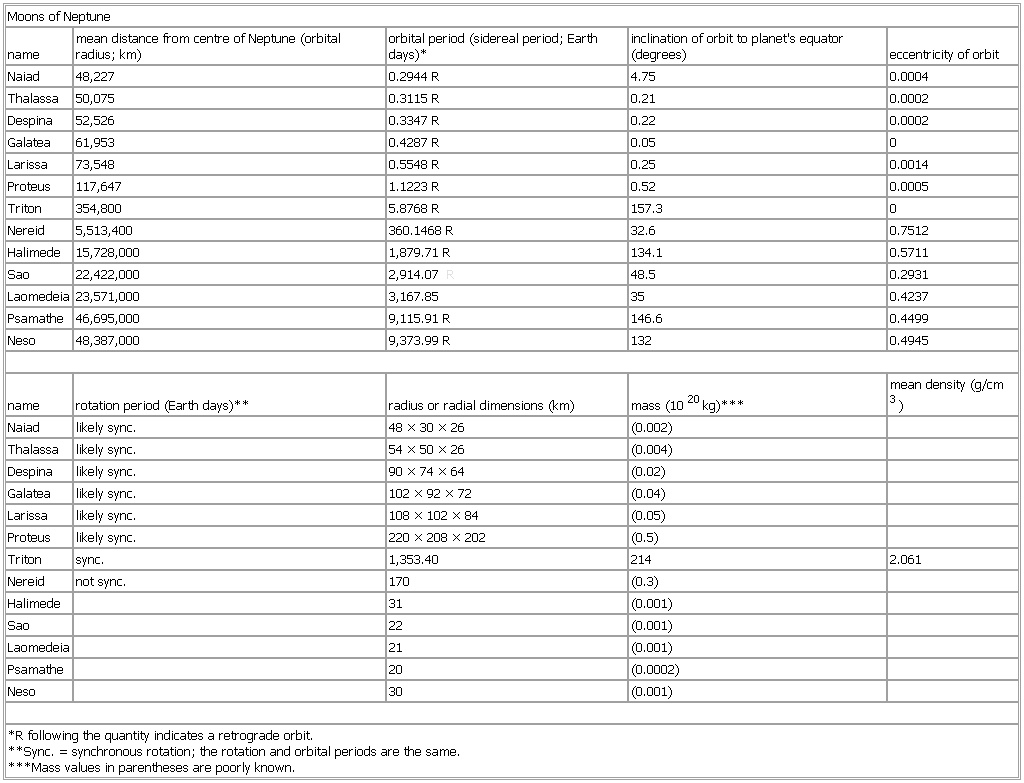- Moons of Neptune
-
▪ TableMoons of Neptunename mean distance from centre of Neptune (orbital radius; km) orbital period (sidereal period; Earth days)* inclination of orbit to planet's equator (degrees) eccentricity of orbitNaiad 48,227 0.2944 R 4.75 0.0004Thalassa 50,075 0.3115 R 0.21 0.0002Despina 52,526 0.3347 R 0.22 0.0002Galatea 61,953 0.4287 R 0.05 0Larissa 73,548 0.5548 R 0.25 0.0014Proteus 117,647 1.1223 R 0.52 0.0005Triton 354,800 5.8768 R 157.3 0Nereid 5,513,400 360.1468 R 32.6 0.7512Halimede 15,728,000 1,879.71 R 134.1 0.5711Sao 22,422,000 2,914.07 R 48.5 0.2931Laomedeia 23,571,000 3,167.85 R 35 0.4237Psamathe 46,695,000 9,115.91 R 146.6 0.4499Neso 48,387,000 9,373.99 R 132 0.4945name rotation period (Earth days)** radius or radial dimensions (km) mass (1020 kg)*** mean density (g/cm3)Naiad likely sync. 48 × 30 × 26 (0.002)Thalassa likely sync. 54 × 50 × 26 (0.004)Despina likely sync. 90 × 74 × 64 (0.02)Galatea likely sync. 102 × 92 × 72 (0.04)Larissa likely sync. 108 × 102 × 84 (0.05)Proteus likely sync. 220 × 208 × 202 (0.5)Triton sync. 1,353.40 214 2.061Nereid not sync. 170 (0.3)Halimede 31 (0.001)Sao 22 (0.001)Laomedeia 21 (0.001)Psamathe 20 (0.0002)Neso 30 (0.001)*R following the quantity indicates a retrograde orbit.**Sync. = synchronous rotation; the rotation and orbital periods are the same.***Mass values in parentheses are poorly known.See as table:

* * *
Universalium. 2010.
